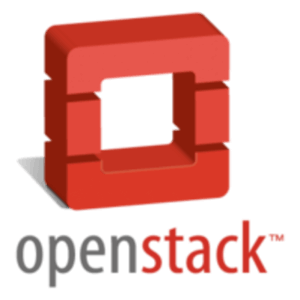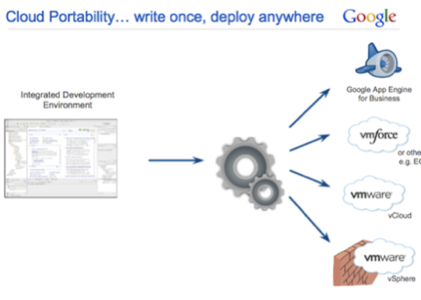We chose our top 10 services based upon what trends bubbled in 2010 and the companies and organizations that responded or even set the tone for the overall market.

We looked at the entire landscape but with a particular focus on platforms.
Platforms provide infrastructure and serve as developer ecosystems. Platforms are where apps are created and served.
The platform ecosystem is a lot like a coral reef, an analogy we borrow from Dave Winer on occasion. Platforms attract services that cater to developers, enterprise managers and business users. These services include cloud management technologies, code repositories and identity systems.
It’s through that lens that we picked our top 10.
github
The github services is a code repository that has skyrocketed in popularity. It’s a fountain of code, bringing life to websites and snippets of wonder that people spread all over the Web. It’s for professional developers and programming hobbyists. A new generation of developers are represented on github. They are there to stay. What they give to the community is of rich value to the entire cloud ecosystem.

OpenStack
This year’s new wonder of the open-source community originates from the folks at Rackspace and NASA who teamed up to build an open-source cloud development platform. Launched in July, OpenStack is available under an Apache 2.0 license. It is growing faster than most platforms do in the first year. This has to be in part due to the star power of NASA and the Rackspace presence in the cloud computing community. It has also been a masterful community development effort as illustrated by the number of developers participating. With the backing of dozens of vendors, the service will play a defining role in the evolution of open, cloud service architectures.

OpenStack has awesome potential but the pressure is on to attract more partners and further grow the community. It is in the best interest of the cloud community to see this succeed. We need true, open platforms. It’s not enough to solely support open APIs.
VMware
VMware defines a trend in the market for virtualized infrastructures as a standard way to access the cloud. These virtualized infrastructures require more than the data center to realize the potential of what cloud computing provides.
For example, VMware’s Spring platform is proving to be a valuable way for enterprise developers to build applications based on Java code. It is serving as an app development gateway for enterprise developers who have traditionally built on a Java platform. It is helping lead the way for platforms such as Google App Engine, which has seen a marked increase in activity. Google and VMware formed an alliance earlier this year. VMware also teamed up with Salesforce.com, which in turn has created a way for developers to better launch apps off the Salesforce.com app exchange.

VMware’s next quest is to become a hybrid platform that provides Web services by offering lightweight technologies that work across multiple programing languages and platforms. VFabric is one of six new products that VMware announced at the end of August. VFabric is a set of integrated application services that include a lightweight application server, global data management, cloud-ready messaging, dynamic load balancing and application performance management. It’s a cloud platform that fits into other efforts to work with third-party service providers that offer extensions into VMware environments. These extensions means VMware can market itself as a hybrid cloud provider. That’s a good bet; it’s one of the smartest strategies we have seen from any cloud computing company this year.
Heroku
Heroku is the end-of-year darling of the cloud world after its neat acquisition by Salesforce.com. Neat meaning that Heroku is expected to receive $212 million in cash for its Ruby on Rails platform. The acquisition awaits approval by regulators.

That’s a sweet deal for Heroku and Salesforce.com. The value is there. Heroku grew at a fast pace this past year. It is now delivering 105,000 apps from its platform. In November of last year it hosted 40,000 apps. That’s a marked increase and a bottom-line testament to Heroku’s success. It has an app ecosystem that extends through Apigee to the social powerhouses such as Twitter. It is built on the Amazon Web Services platform. Ruby developers are using it for powerful purposes.
For example, Flightcaster is a service that checks your flight to see if it is on time. It can predict up to six hours in advance if your flight will be late. The app is on Heroku but uses the AWS Hadoop infrastructure to provide its optimization.

Heroku’s future looks bright. Its acquisition by Salesforce.com extends the reach for Ruby on Rail applications. Heroku has and will continue to play a significant role in validating the use of Ruby in the enterprise. It’s now a question of how it extends and works with back end systems.
Salesforce.com
Salesforce.com is now a platform company. This past week is testament to the role Chatter has played in the development of its strategy. Salesforce.com opened itself to a larger developer community by offering Chatter. It’s just a year old but its significance cannot be questioned. That became apparent earlier this year when it formed its alliance with VMware. VMforce is a java platform that integrates with Force.com. That set the company on a trajectory to adopt a platform strategy. Last week, in addition to its announcement about its acquisition of Heroku, Salesforce.com launched Database.com, a database environment for app developers. It’s an affordable environment. The developer does not need to invest in database technology. It is a stand-alone service available via its SOAP and REST APIs to any language on any platform or device – not just Force.com developers.

This new service brings Salesforce.com into competition with Oracle not just in CRM but in Oracle’s oldest turf: databases. And it gives Salesforce.com a greater chance at extending deeper into the Microsoft installed base. A cloud service provides agility and speed for an enterprise. CEO Marc Benioff is the master in communicating the cloud’s value. Luckily for Benioff, Salesforce.com also has a team of smart developers. That gives Benioff a better opportunity to tell the company story. Look out – 2011 is going to be a big year for Salesforce.com
Success Factors
Success Factors uses activity streams as a universal notifier and contact environment for employee productivity. It’s a different strategy than Chatter, which uses activity streams to enhance its customer relationship platform. Instead, it’s more about establishing a presence for every employee in the enterprise by offering a dashboard view. In October, the company made a big play into the business intelligence market with its acquisition of YouCalc, a SaaS service out of Denmark that does analytics across multiple applications, including Google Analytics, Mailchimp and Salesforce.com.

Sucess Factors is a publicly traded company. It has a market share of about $2.5 billion and $200 million in annual revenues. It’s an application provider that provides third-party integrations. That’s not such a bad place to be when the market is turning as it is. Companies are using services to empower their employees. It represents a shift in spending that Success Factors seems primed to exploit.
Amazon Web Services
AWS is the barometer for all cloud service providers. It’s the pioneer in the cloud computing market but also the leader. By constantly optimizing, AWS is able to drop prices and add instances. The Cluster GPU instance, for example, allows companies to do operations for displaying complex graphics at high speed. This past week, AWS followed up on that news by offering more storage capacity for customers:

A number of our customers want to store very large files in Amazon S3 — scientific or medical data, high resolution video content, backup files, and so forth. Until now, they have had to store and reference the files as separate chunks of 5 gigabytes (GB) or less. So, when a customer wanted to access a large file or share it with others, they would either have to use several URIs in Amazon S3 or stitch the file back together using an intermediate server or within an application.
No more.
We’ve raised the limit by three orders of magnitude. Individual Amazon S3 objects can now range in size from 1 byte all the way to 5 terabytes (TB). Now customers can store extremely large files as single objects, which greatly simplifies their storage experience.
AWS has more competition than it ever has before but it still remains out front and shows no sign of giving up its leadership spot.
Windows Azure
Windows Azure represents Microsoft’s deep investment in the cloud. It showed this year with Steve Ballmer’s proclamation that the cloud represents Microsoft’s future. It is perhaps the most massive undertaking of any company cloud initiative. It is host to Office applications with Docs.com. It has the compute capabilities to be used for scientific research. It’s an app platform that is language independent. It looks like they got it right. It has an apps marketplace for data that developers can use to build apps. It’s a powerful combination and deserves inclusion in our top 10 list.

Google Apps Marketplace
Google is achieving something significant with its Google Apps Marketplace. It is serving as an ecosystem for third party SaaS providers. Its success shows in its numbers. It has more than 200 apps and about four million users with access to the service.
Services like SherpaTools strengthen the platform:
Google Apps Marketplace provides another example for how marketplaces can help create services that extend what a SaaS can offer. It also shows the strength of the Google apps suite. Cloud app marketplaces are fast emerging. Google Apps Marketplace is helping set the standard by embracing the open Web, OpenID and REST-based APIs. This gives customers ease of use and flexibility. That’s a critical combination that provides companies a level of agility that has in the past been rare to come by.
Twilio
Twilio is intriguing. It’s an energetic group of people who have embraced telephony in the cloud with more youthful energy compared to most companies we follow. This is a company that has a bounty of case studies for how the platform is applied. We think of it as an idea engine that demonstrates how messaging is becoming a new communications system for people. Messaging can be done through SMS or through apps that trigger information that needs to be presented in a specific context. Twilio also makes money. Its API provides ways for developers to create services that can be charged to the end user. That’s a huge market opportunity. Twilio is right there to take advantage of it.

Thanks to everyone for their support in the development of ReadWriteCloud. Our community has grown quite a bit in the past year. We value your continued interest. We look forward to a new year with more coverage and insights to help you get a picture of the market, its technologies and the trends that are fueling significant innovation.










